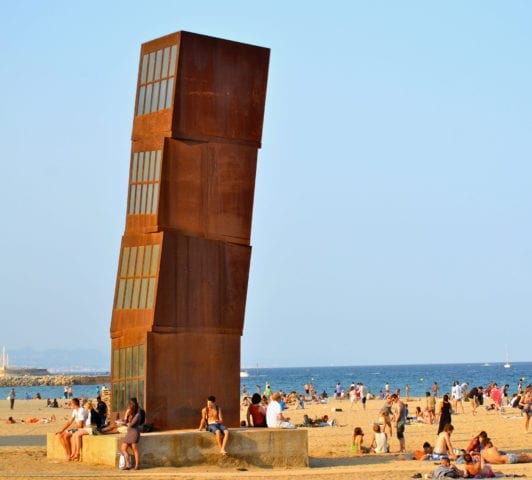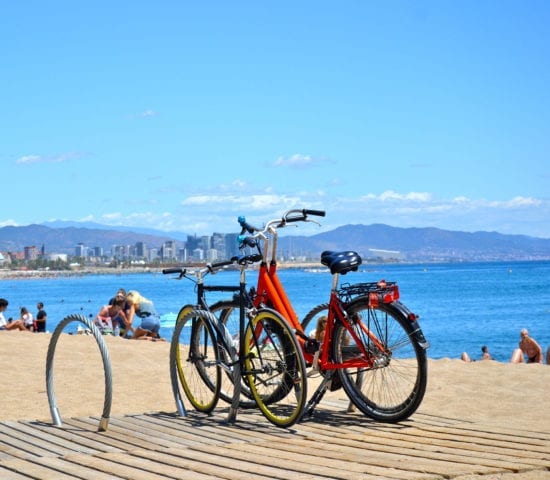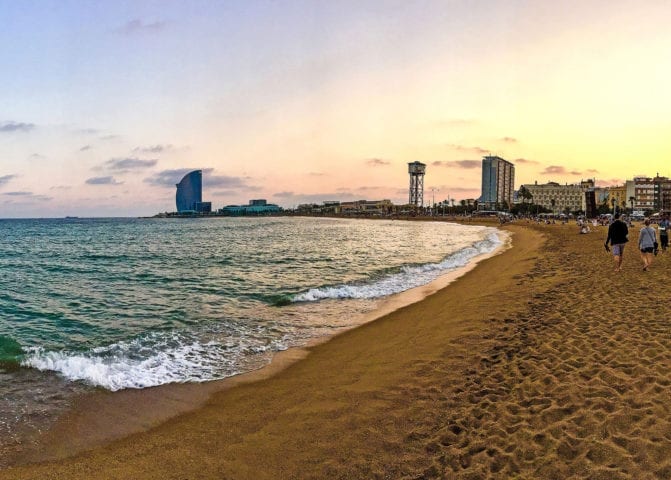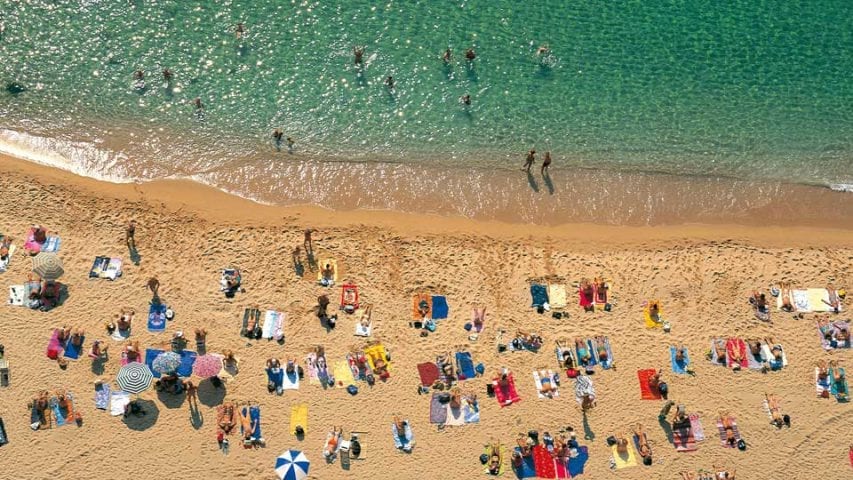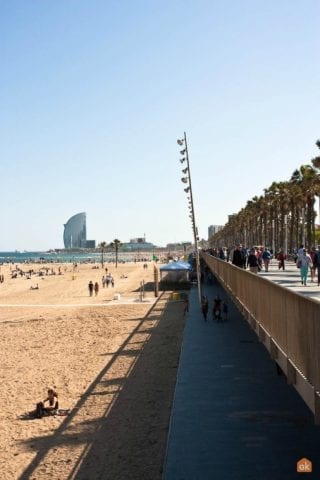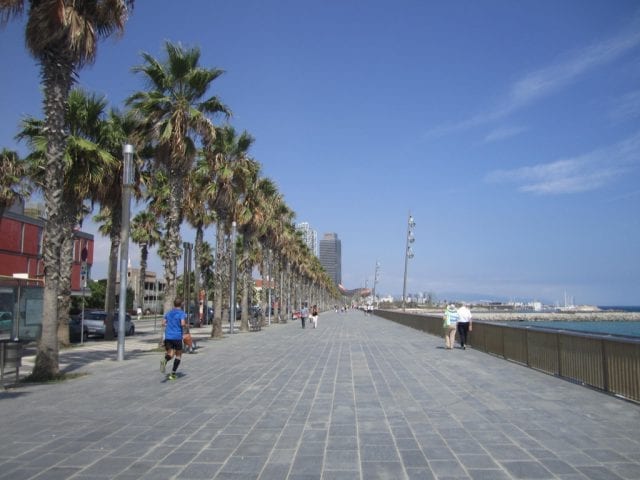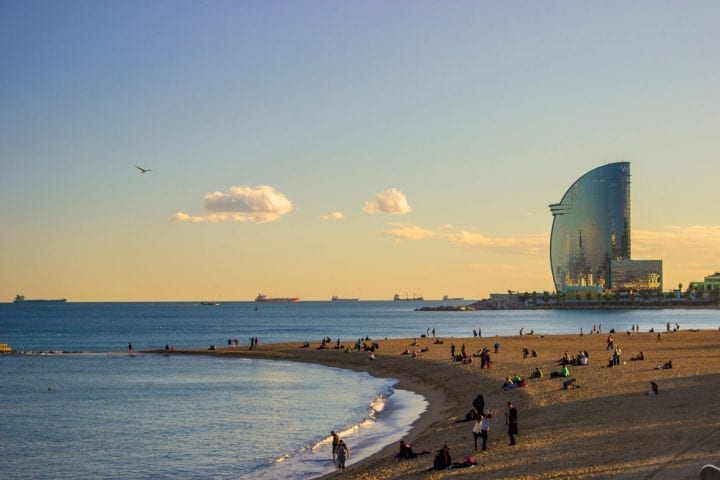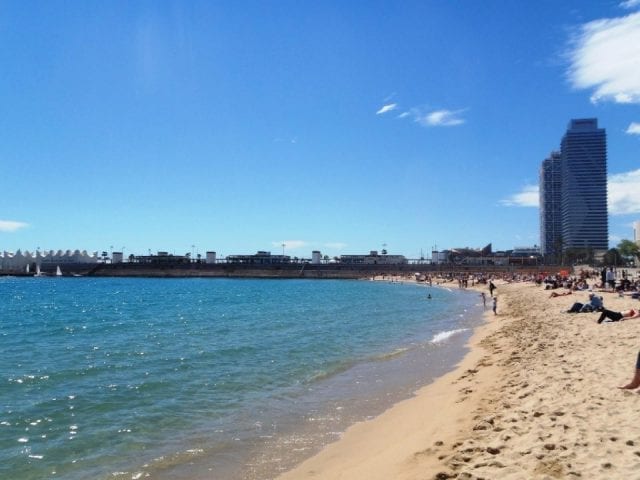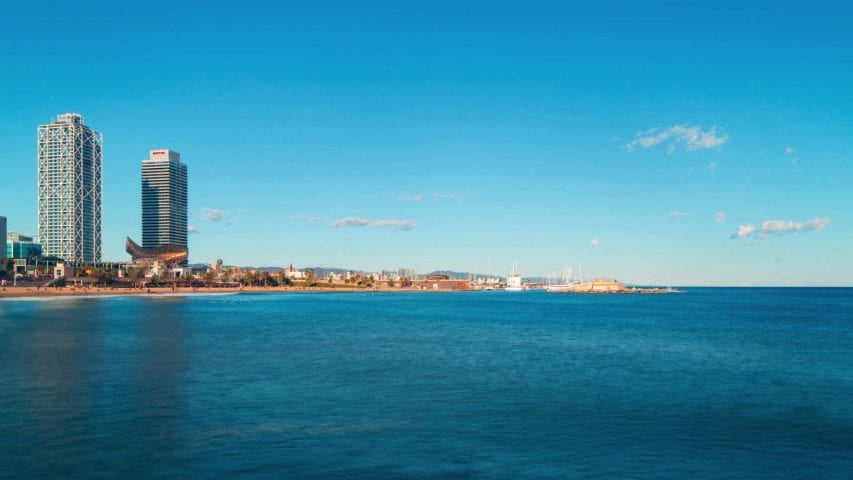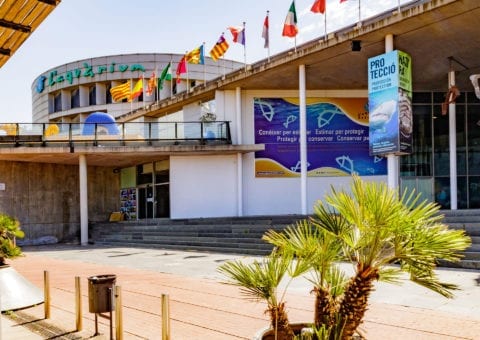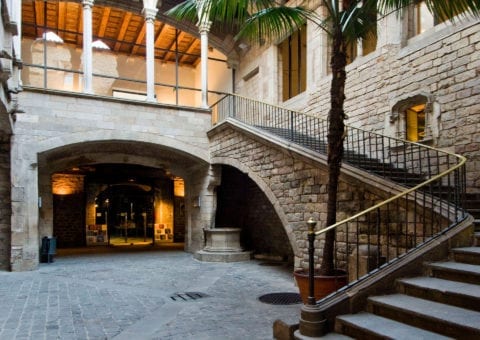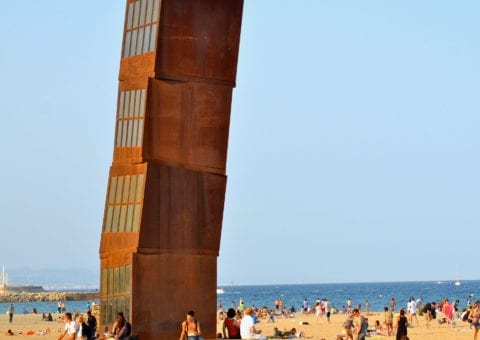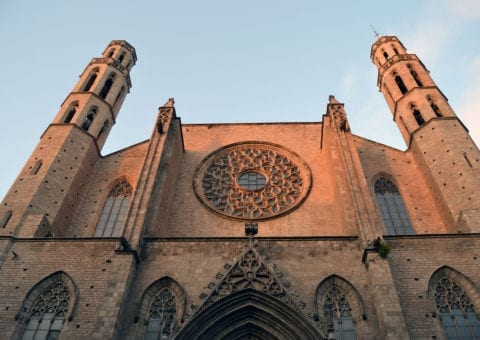La Barceloneta, whose origins date back to the 18th century, is the neighborhood that borders the sea, seafaring par excellence and with a landscape of narrow streets with a very familiar air that will immediately win you over. It is like entering any fishing village on the Mediterranean coast, but in the heart of the city. It is enclosed between beaches, the so-called Port Vell, the Estació de França and the more recent Port Olímpic, all of which are of great landscape and architectural interest. If there is something that identifies it to the maximum, it is its gastronomic offer, a tribute to the flavors of seafood cuisine, with all kinds of popular places (taverns, wineries, restaurants…).
A little history
In 1477, King John II commissioned the construction of a dam that linked the city’s mainland with the Mayans Island. The accumulation of sand caused by sea currents gave rise to a new space reclaimed from the sea, where the neighborhood is today. from Barceloneta.
The birth of the neighborhood was due to the destruction of houses in the Barrio de la Ribera that Felipe V carried out to build the Citadel that would control the city militarily, many of the inhabitants who lost their homes moved to Barceloneta and Somorrostro beach . 320 lots were assigned and the works did not begin until 1753, the design of the neighborhood project with rectilinear forms and the structure of the houses that only had a ground floor and first floor is due to being able to control the neighborhood militarily from the Citadel, it is said that even clothes could not be hung on the roofs so as not to hinder the artillery fire. The neighbors to break the uniformity of the buildings chose to paint the houses in different colors. The rise of the port of Barcelona, the activity of the sheds that stored the goods, the creation of new shipyards and workshops gave the neighborhood prosperity. At the beginning of the 19th century, due to this strong growth, it was allowed to raise the height of the buildings up to 4 floors.
Among its squares there are four that break the rectilinear shape of the neighborhood: Pl. Pompeu Fabra, Pl. de la Font del Mercat, Plaza del poeta Boscá where the Municipal Market is located and Plaza de la Barceloneta, which is very close. of the Church of Sant Miquel del Port, in the house next to the church lived Fernidand Lesseps.
Barceloneta Beach Bars
For those of us who knew La Barceloneta before the 1992 Olympic Games, the change has been profound, I still remember what its beach bars were like, its smell of seafood, the public toilets, the fish market and the inimitable Bernardo Cortés singer, poet and rhapsodist who livened up meals with his guitar and his own compositions. If you go to Barceloneta beach you will see a metal sculpture of cubes that rises to the sky, it is a tribute to the old food bars that were located here.
Barceloneta Beach
With approximately 1,100 m in length, it is, along with Sant Sebastià, one of the largest beaches in Barcelona, and one of the oldest and most traditional in the city.
